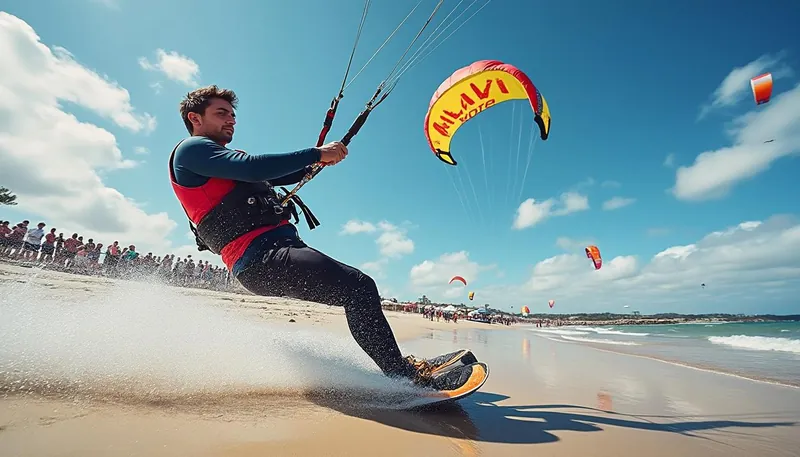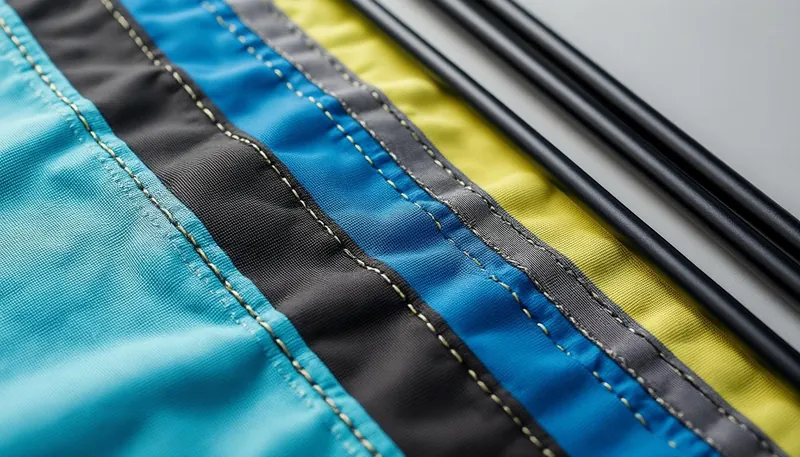Traction kites are increasingly becoming popular among enthusiasts of various outdoor sports. These powerful kites, which can pull a person on land or water, provide thrilling experiences for both amateurs and pro riders. But how long do traction kites typically last? The answer isn’t straightforward, as several factors influence their longevity, such as usage frequency, maintenance, and environmental conditions. In this article, we’ll explore the lifespan of traction kites, recommendations for care, and the impact of brands such as Ozone, Naish, Cabrinha, and more.
Brief:
- Traction kites last between 2 to 10 years depending on conditions.
- Brands like Ozone and Naish are known for durability. 💪
- Proper maintenance can extend the kite’s life significantly. 🛠️
- Environmental factors, such as saltwater and UV exposure, can degrade fabrics. ☀️
- Different brands have varying lifespans; understanding your kite’s specs is crucial. 📊
The Average Lifespan of Traction Kites
The lifespan of traction kites typically falls between 2 to 10 years. However, the duration significantly depends on several factors, such as how frequently the kite is used and how well it is maintained. For instance, a kite that’s used in ideal conditions may outlast one that’s frequently flown in harsher environments.
Regular users of traction kites might find themselves replacing their kites every 3 to 5 years. This is particularly common in professional settings, where riders are actively pushing their gear to performance limits. Those who fly less frequently, perhaps just for leisure or occasionally during weekends, could enjoy a lifespan of up to 10 years. It’s essential to note that this lifespan can be influenced by the materials used. For example, kites by brands like Duotone and Slingshot are often constructed with durable ripstop fabrics that may last longer than others.
Factors Influencing Lifespan
Several key factors play a significant role in determining how long a traction kite will last:
- Frequency of Use: More frequent flying generally leads to more wear and tear. 🏄♂️
- Environmental Conditions: Flying in saltwater or strong UV rays will degrade the materials. 🌊
- Storage: Properly storing the kite when not in use can help preserve it. 🏠
- Maintenance: Regular cleaning and inspections can prolong the lifespan significantly. 🛡️
Brand Comparisons: Ozone, Naish, Cabrinha, and More
When it comes to the durability of traction kites, the brand often plays a pivotal role. Not all kites are created equal, and each manufacturer implements different materials and technologies that affect longevity.
| Brand | Average Lifespan | Common Features | Durability Rating |
|---|---|---|---|
| Ozone | 4-8 years | Durable materials, high performance | ⭐️⭐️⭐️⭐️⭐️ |
| Naish | 3-7 years | Powerful pull, reliable design | ⭐️⭐️⭐️⭐️ |
| Cabrinha | 4-6 years | Stability in flight, robust construction | ⭐️⭐️⭐️⭐️⭐️ |
| Duotone | 3-5 years | Lightweight, responsive handling | ⭐️⭐️⭐️ |
Among these brands, Ozone is particularly recognized for its focus on durability and performance. Those who opt for an Ozone kite often report longer lifespans and reliability in tough conditions. On the other hand, kites from Naish also receive high marks for their power pull and stability in flight, but users might need to replace them a bit sooner.
Choosing the Right Traction Kite
When selecting a traction kite, it’s essential to consider your experience level and intended use. Not all kites are built for the same purpose. Beginners might benefit from brands like F-One or Liquid Force, which often feature features geared toward easier handling and safety.
For those pursuing high-speed kiteboarding, brands like Peter Lynn and Airush offer advanced models with enhanced performance characteristics. Here are some tips for choosing the right traction kite:
- Assess your skill level and experience. 🏅
- Evaluate the type of activities you plan to do (landboarding, kitesurfing, etc.). 🏖️
- Research the brand’s reputation among users. 🤓
- Test different sizes: Size matters; a bigger kite pulls more but requires more skill to handle. 📏
Maintenance Tips for Prolonging the Life of Your Traction Kite
Getting the most out of your traction kite involves a dash of TLC (tender loving care). Here are some practical maintenance tips to extend the life of your kite:
- Always rinse your kite with freshwater after flying in saltwater. 💧
- Store the kite in a dry place away from direct sunlight. ☀️
- Inspect the lines and fabric for any signs of wear before and after each session. 🧐
- Consider using a repair kit to patch up any tears or damages promptly. 🛠️
- Follow the manufacturer’s guidelines for servicing and storage. 📚
By incorporating good habits when it comes to storage and post-session care, users can significantly amplify the kite’s lifespan. A little preventive care can go a long way in enjoying your kite for years to come!
Environmental Impact on Kite Durability
Do you ever wonder how the environment affects your traction kite? Saltwater, sunlight, and even wind can influence its lifespan. For instance, exposure to UV rays can degrade the materials over time, causing them to weaken. This is especially true for high-quality fabrics that are often used in kites.
Flying in urban areas with pollutants can also take a toll on the fabric, leading to permissible damage that shortens its lifespan. Thus, it is vital to consider your flying environment when deciding on a kite and its maintenance practices.
Understanding Traction Kite Lifespan: FAQs
How can I tell when my traction kite needs replacing?
If you notice tears in the fabric, frayed lines, or a significant reduction in performance, it may be time to replace your kite.
Are there specific maintenance products for traction kites?
Yes, many brands offer dedicated maintenance kits that include repair patches, cleaning solutions, and storage bags tailored to kites.
What should I avoid to extend my kite’s life?
Avoid exposing your kite to harsh conditions like extreme UV light, saltwater without rinsing afterward, and leaving it in damp areas.
Do different sizes of kites last longer?
Generally, smaller kites used less often tend to last longer, while larger kites are often flown in more demanding conditions, potentially shortening their lifespan.
Can I fix my traction kite myself?
With the right repair kit, many minor damages can be fixed at home. However, major repairs may require professional attention.

